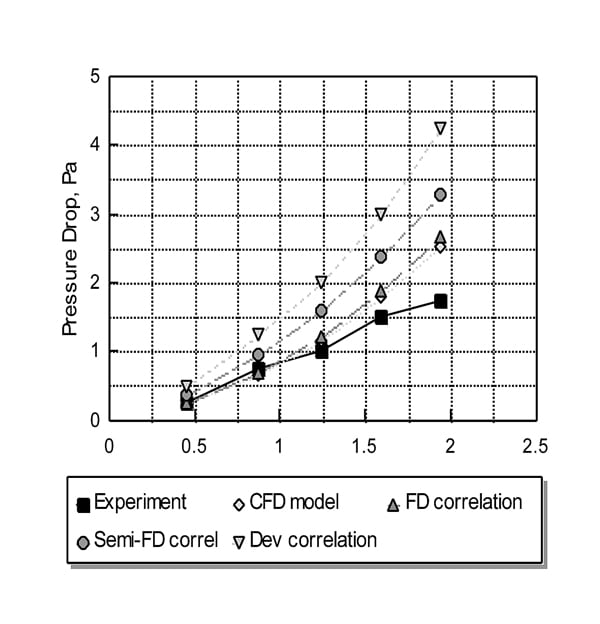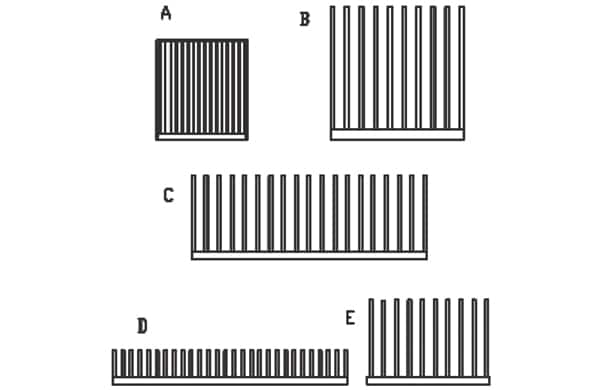Clemens J.M. Lasance
Guest Editor, Philips Research Emeritus, Consultant at SomelikeitCool
I assume everybody agrees with the fact that it is pointless to devote precious space in this magazine to highlight again all problems related to thermal management of electronic products and systems, so let’s start right away.
An important way of reducing the temperature in an optimal way is by a proper choice of a heat sink. Apart from the fact that in many applications the design freedom is limited, often due to space or weight requirements, the designer is also confronted with the following problem areas:
- Many new developments, in manufacturing as well as in layout (extruded, corrugated, pin fin, metal foam, narrow channel, enhanced plastic, etc.)
- Many criteria to base an optimal choice on (performance, weight, volume, cost)
- The manufacture’s data is often rather limited in practice because they often are derived for closed ducts
- Data needs to include pressure drop
- Standard correlations fail for many practical cases (usually only valid for confined heat sinks)
- Not having a fan does not mean we talk natural convection at the system level
- Detailed CFD modeling at the system level is often not an option unless time, a supercomputer and a calibration lab are available.
Since literally thousands of heat sinks are available, the designer faces the question: which one? The fact is that too often the choice is based only on cost and vendor data, the problem with the latter being that often their practical usefulness is debatable because they are almost exclusively based on measurements in a closed duct, thereby disregarding bypass effects and inflow conditions. Of course, this applies to forced convection. However, be aware that at the system level we often don’t talk natural convection at a local level. This was realized a long time ago, and around the mid-1990s the ASME K16 committee took the initiative to tackle this problem. Belady [1] reported the first results. However, as far as I know, no final report has been published, despite the impressive list of highly qualified members of the committee, proving the difficulty of finding a satisfactory solution. I am afraid not much has changed since. The conclusion must still be that vendor data at best can be used for comparison purposes but should be treated with great care when this data is going to be used for final design. So, if vendor data is of limited use, what is the alternative? And here is the fairy tale: use impressive-looking correlations. What’s wrong with this? Well, most equations are based on the following assumptions:
- parallel plate heat sinks
- fully ducted flow
- fully developed flow
- strong impact of 3D flow (especially in natural convection) not considered
- equal number of fins and channels
- negligible entrance and exit effects
- laminar and uniform approach flow
- no temperature gradient in heat sink base
- heat spreading effect of base not taken into account
- uniform fin temperature (both between fins and within a fin)
Now have a look at the following pictures showing a plethora of heat sinks developed for LED applications:
Obviously, if you use handbook equations to base a design upon, chances are high that you miss most of the heat sinks shown above. Indeed, extrusion-based parallel-plate heat sinks are the cheapest around, but they score badly when it comes to optimization of shape/weight/volume/performance, especially regarding optimal fin thickness. What I find remarkable in 2013, is that purchasing departments still play a major role in deciding what kind of heat sinks are to be preferred, often based upon cost (and aesthetical) arguments only. Not much changed since the 1970s, the days when Philips Elcoma manufactured 4 billion resistors a year, and when Philips TV sales people tried to find a vendor operating from a shed somewhere in Asia who would sell a couple of hundred resistors that would go into a single TV for 0.01 cent a piece less. The price of a TV in those days was $2,000. The same kind of sub-optimization is still going on in the LED world. Nothing new of course, look what the banks are doing nowadays, after having caused a lot of misery worldwide only a few years ago. You can’t teach an old dog new tricks.
For designers that are not convinced or prefer black parallel-plate heat sinks (de gustibus et coloribus non est disputandum), here is something to reconsider. A long time ago Biber and Belady [2] realized that the pressure drop is one of the most important parameters because it determines the velocity and consequently the heat transfer. They compared correlations for developing and fully-developed flow with test and CFD results for a number of heat sinks, see Figure 2.

As you may notice, we are not talking peanuts here. Even for rather low velocities around 1 m/s, the differences are of the order of 50-100 percent, at least for the correlations. CFD results start to differ above 1.5 m/s, which could be due to the flow model and meshing used. Maybe it’s time that somebody repeats this analysis using state-of-the-art CFD? The authors concluded that not only were the correlations of limited use when it comes to accuracy, but also that the prevailing test methods should be improved since no standardized test method exists. Note for the experienced reader: be aware that this is a column, not an article. This example is just to illustrate that the matter is much more difficult than is suggested by the correlation worshipers.
CONCLUSION
Designers of the world: unite! Convince your bosses that it pays off to optimize at the system level, not at the part level. And in such a world there is no place for correlations that are exclusively based on single parallel-plate heat sinks in wind tunnel flow, unless of course your application requires such a fin and is used in a wind tunnel.
Are there alternatives? Sure, recommended approaches are:
- Dedicated tests to rank a series of heat sinks
- CFD with calibrated heat sink compact models
- Prototype testing in a realistic environment
These approaches are discussed in [3].
Finally, I highly recommend to repeat the CFD analysis and experiments as published by Biber and Belady [2], using state-of-the-art CFD codes. Additionally, as proposed by me on a JEDEC meeting in March 2012, we need a revival of the Working Party that started in 1995 to address proper standardization practices. Last but not least, there are still too many U.S. vendors that use only U.S. units, as if the U.S. is the only country that matters.
Further Reading
Introductory texts using design equations for forced convection heat transfer can be found in Biber [4, 5, 6], and in an overview of Calculation Corner topics that appeared in Electronics Cooling over the past ten years or so [7]. Also recommended is the famous book by Kraus and Bar-Cohen [8]. More on the few pros and many cons of correlations, see Lasance [9].
REFERENCES
[1] Belady, C.L., 1997, “Standardizing Heat Sink Characterization for Forced Convection,” Electronics Cooling,https://electronics-cooling.com/1997/09/standardizing-heat-sink-characterization-for-forced-convection/
[2] Biber, C.R., and Belady, C.L., 1997, “Pressure Drop Prediction for Heat Sinks: What is the best Method?” Advances in Electronic Packaging, Proceedings of the Pacific Rim/ASME International Intersociety Electronic & Photonic Packaging Conference (InterPACK 1997), EEP-Vol.19-2, pp. 1829-1835.
[3] Lasance C., Heat sink basics from an industrial point of view, Chapter 9 in: Thermal management of LED applications, Lasance C. and Poppe A., editors, Springer, US, expected in July 2013
[4] Biber, C.R., 2005, “Pressure Drop Calculation for Rectangular Channels – Part I: Laminar Flow,” Cooling Zone, http://www.coolingzone.com/library.php?read=489
[5] Biber, C.R., 2005, “Cooling Zone “Pressure Drop Calculation for Rectangular Channels – PART II: Turbulent Flow,”http://www.coolingzone.com/library.php?read=490
[6] Biber, C.R., 2005, “Heat Transfer in Rectangular Chancels – PART III” Cooling Zone, http://www.coolingzone.com/library.php?read=491
[7] Simons B., Calculation Corner: a useful catalog of calculation corner articles, ElectronicsCooling September 2011, https://electronics-cooling.com/2011/09/a-useful-catalog-of-calculation-corner-articles/
[8] Kraus and Bar-Cohen, Design and Analysis of Heat Sinks, John Wiley, 1995, Design and Analysis of Heat Sinks, John Wiley and Sons, Inc., New York, (2nd printing 1997)
[9] Lasance, C.J.M., Sense and Nonsense of Heat Transfer Correlations Applied to Electronic Cooling, Sixth International Conference on Thermal, Mechanical and Multi-Physics Simulation and Experiments in Micro-Electronics and Micro-Systems (EuroSimE), Berlin, Germany, April 18 – 20, 2005, pp. 8-16.












